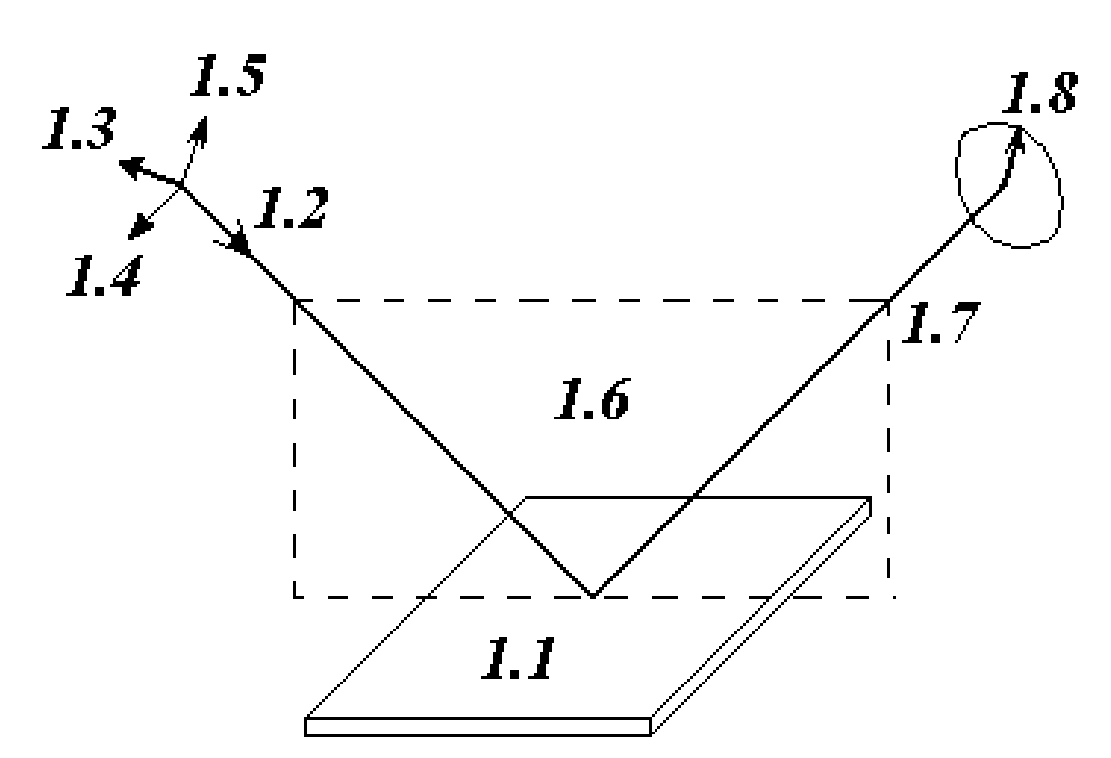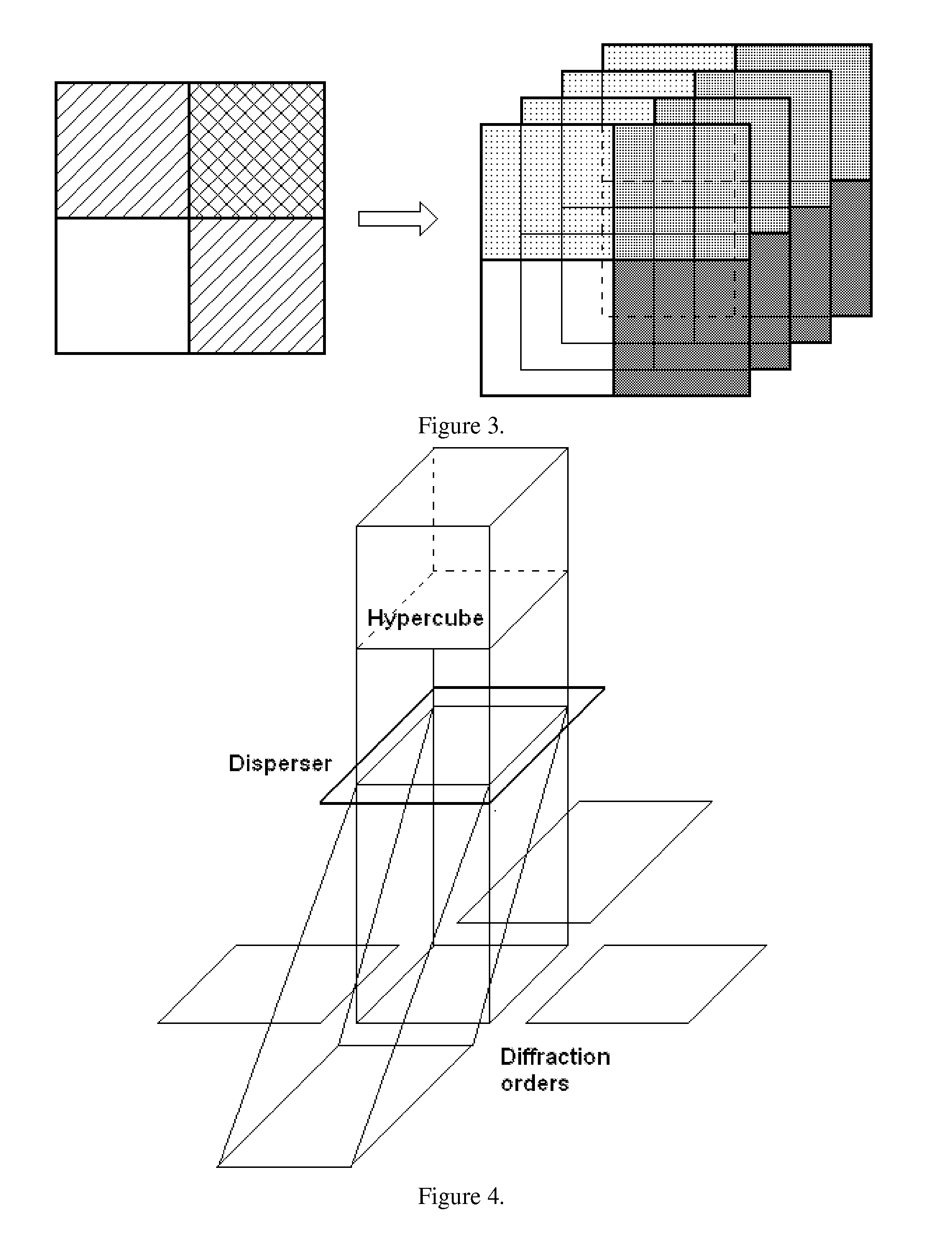Apparatus for characterization of thin film properties and method of using the same
a thin film and characterization technology, applied in the field of apparatus and thin film characterization, can solve the problems of limited commercial success of thin film photovoltaics at present, and high cost of pv modules, and achieve the effect of fast data acquisition speed
- Summary
- Abstract
- Description
- Claims
- Application Information
AI Technical Summary
Benefits of technology
Problems solved by technology
Method used
Image
Examples
first embodiment
[0092]The thin film characterization apparatus according to the present invention is illustrated by an exemplarily nonlimiting FIG. 7. It comprises:[0093]a) a broadband light source (component 1 in FIG. 7),[0094]b) an optical assembly (component 2 in FIG. 7) for delivery of light emitted by said light source to the first polarization assembly,[0095]c) a first polarization assembly (components 3,4 in FIG. 7) for defining the state of polarization of the light emitted by said light source,[0096]d) a device under test (component 6 in FIG. 7) illuminated by light emitted by said light source with polarization state defined b y the first polarization assembly which modifies the spectral and polarization content of the reflected light in response to the structure of said device under test,[0097]e) an optical assembly (component 7 in FIG. 7) for delivery of light reflected from device under test to the second polarization assembly,[0098]f) a second polarization assembly (components 8, 9, 1...
second embodiment
[0111]The thin film characterization apparatus according to the present invention is illustrated by an exemplarily nonlimiting FIG. 8. It comprises:[0112]a) a broadband light source (component 1 in FIG. 8),[0113]b) an optical assembly (component 2 in FIG. 8) for delivery of light emitted by said light source to the first polarization assembly,[0114]c) a first polarization assembly (components 3 and 4 in FIG. 8) for defining the state of polarization of the light emitted by said light source,[0115]d) a device under test (component 6 in FIG. 8) illuminated by light emitted by said light source with polarization state defined b y the first polarization assembly which modifies the spectral and polarization content of the reflected light in response to the structure of said device under test,[0116]e) an optical assembly (component 7 in FIG. 8) for delivery of light reflected from device under test to the second polarization assembly,[0117]f) a second polarization assembly (components 8, ...
fourth embodiment
[0134]The basis of the approach that is behind such a method of the present invention is the fact that the spatio-spectro-polarimetric anomaly in the hypercube manifests itself as intensity peculiarities in thin film characterization apparatus' nonreconstruced image as well, as schematically illustrated in calculated FIG. 12. Hence, in principle, the anomalies can be detected from the statistical analysis of the nonreconstructed raw image without the computationally-intense full hypercube restoration. To accomplish it one will need to statistically analyze the nonreconstructed raw images and identify the anomalies in intensity distribution (with mathematical processing and optionally buy mathematically comparing the raw data with preliminary stored reference data); selectively reconstruct the hypercube portions in areas of detected anomalies (highlighted in FIG. 12), and detect anomalies in the reconstructed hypercube portions and identify the nature of anomalies. Implementation of ...
PUM
 Login to View More
Login to View More Abstract
Description
Claims
Application Information
 Login to View More
Login to View More - R&D
- Intellectual Property
- Life Sciences
- Materials
- Tech Scout
- Unparalleled Data Quality
- Higher Quality Content
- 60% Fewer Hallucinations
Browse by: Latest US Patents, China's latest patents, Technical Efficacy Thesaurus, Application Domain, Technology Topic, Popular Technical Reports.
© 2025 PatSnap. All rights reserved.Legal|Privacy policy|Modern Slavery Act Transparency Statement|Sitemap|About US| Contact US: help@patsnap.com



